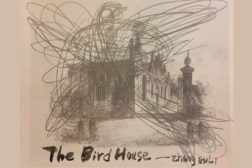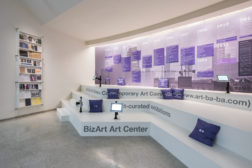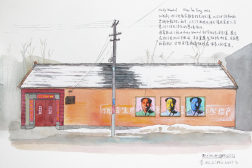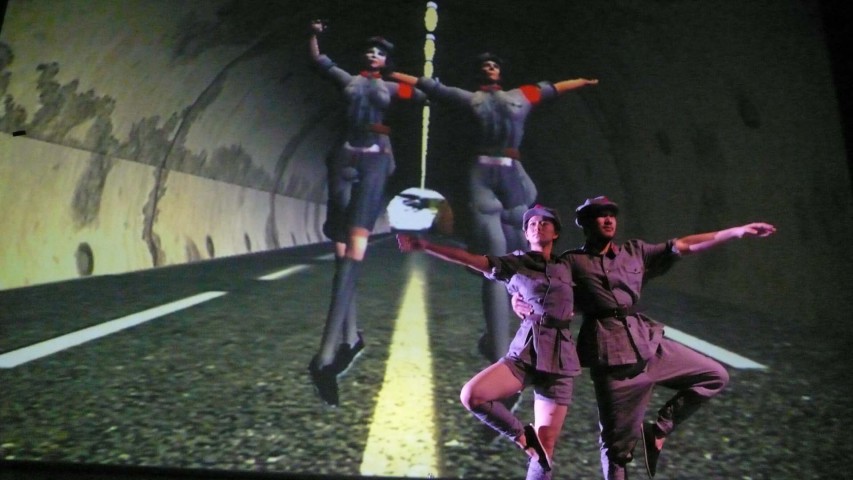
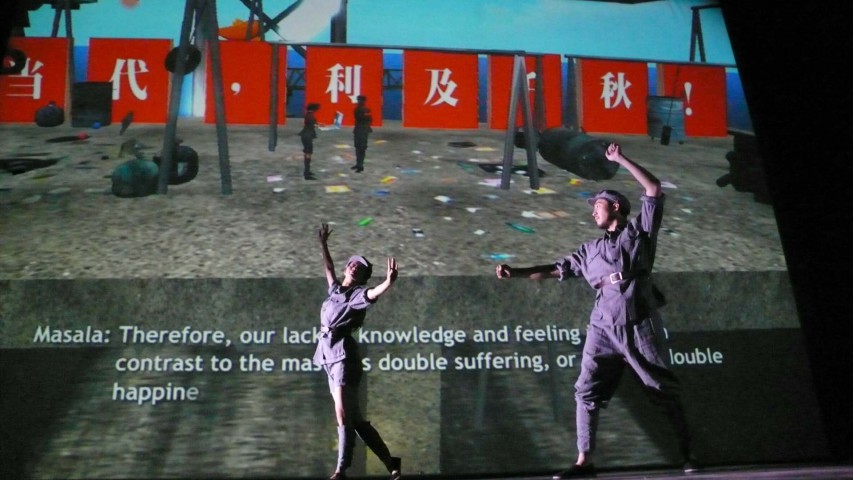


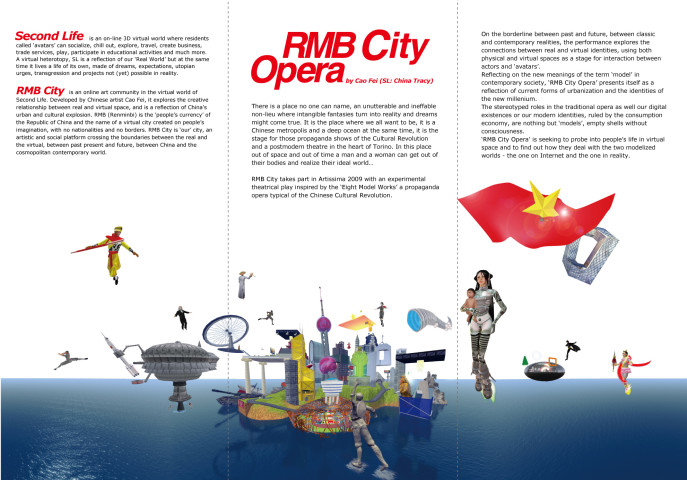
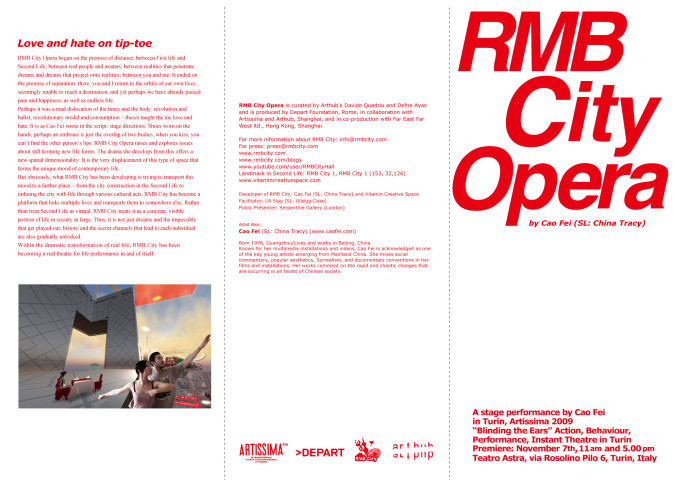
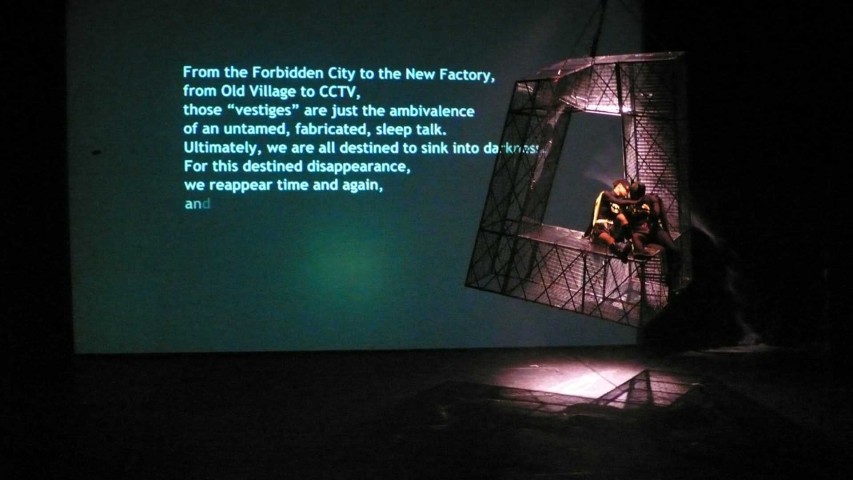
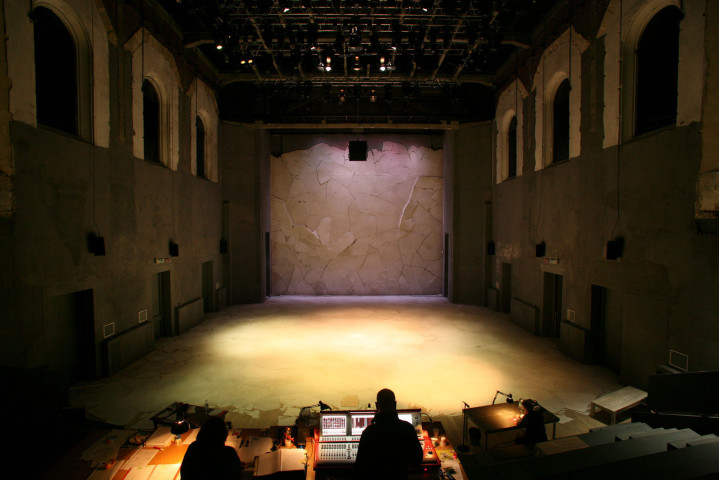
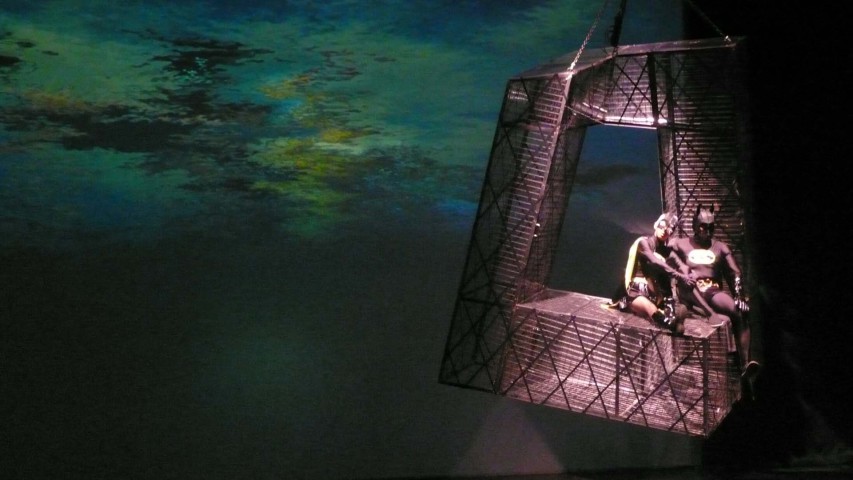

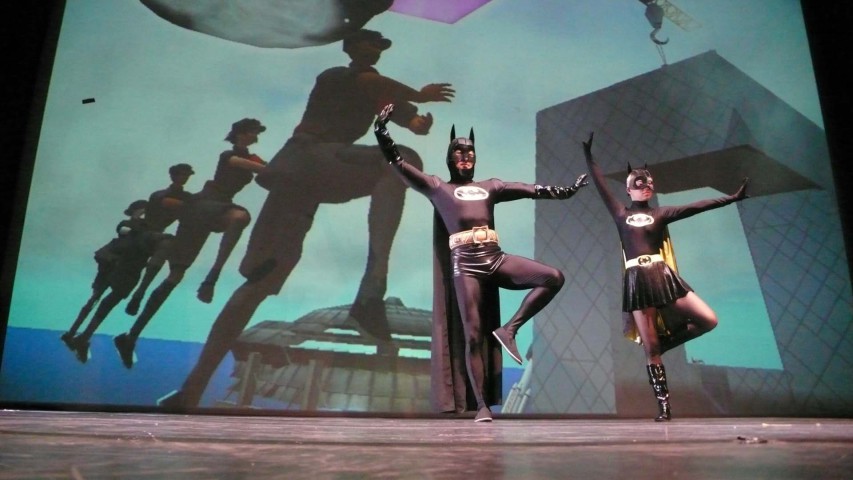
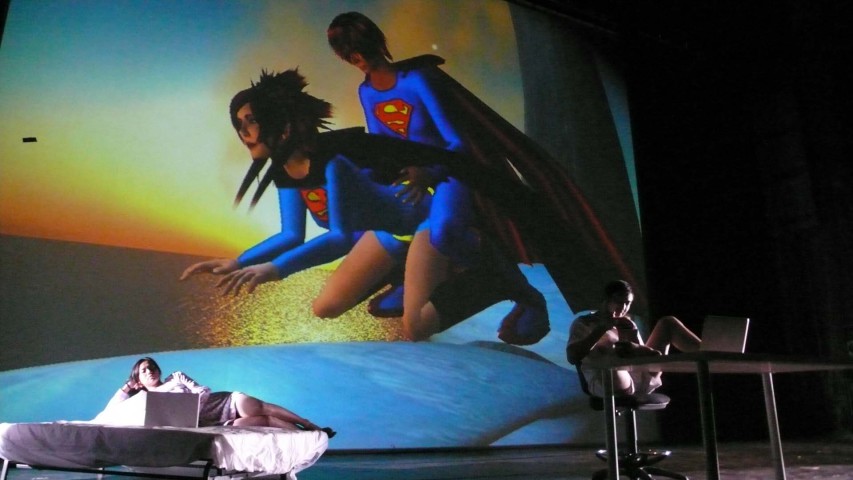

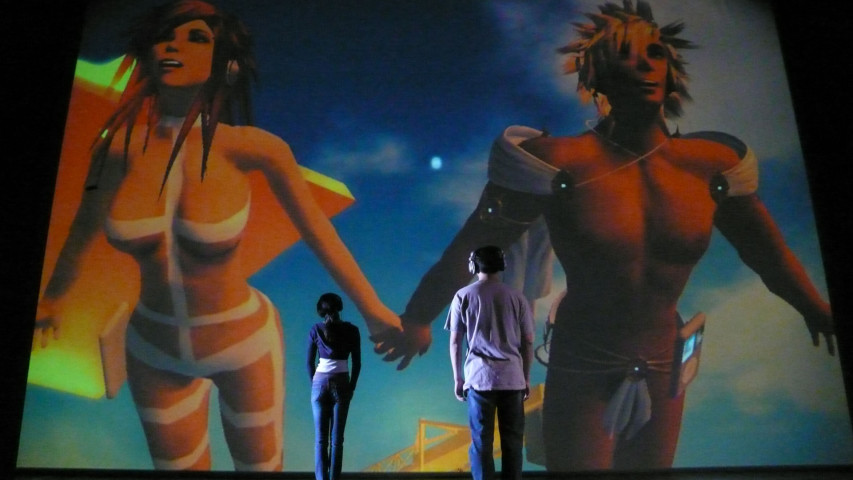
RMB City Opera by Cao Fei (Turin), Artissima 16 Theater Project
Utopia of Utopias: The Pleasure of Rewriting Realities
Introduction by Defne Ayas and Davide Quadrio
As part of the Artissima 16 Theater Project “Blinding the Ears,” Arthub has invited the artist Cao Fei to create a live piece based on her RMB City project: an experimental city and community in the internet-based virtual world of Second Life, in order to continue her investigation of the connection between the digital fantasy-scapes and the physical world.
For this new live work to be presented at the Astra Theatre in Turin, Cao Fei embarks on the challenge of not only creating new chapters of RMB City, but also working with avatar-actors and various staging elements to create a new drama based on the “model dramas” (Yang Ban Xi) of Cultural Revolution period. Yang Ban Xi was the only politically approved performance form at the time, since traditional opera was banned by Mao Zedong’s wife Jiang Qing.
Yang Ban Xi were series of propaganda productions (movies, musicals, ballets, operas) that were later adapted into cinematic form, thereby becoming more entrenched in the visual and symbolic imagination of an entire era of Chinese history. The integration of elements, of the then banned Chinese traditional opera, ballet, propaganda songs and popular music, featuring ballerinas pirouetting with rifles and male proletariat dancers executing landlords, rendered in boldly colored costumes, against kitsch inflected sets, are some of the elements that continuously fascinated Cao Fei, who has been exploring the potential of the operatic medium every since.
** Please refer to her theatrical stage production “PRD Anti-Heroes” (2005).
Cao Fei’s concept of performance in RMB City will make a clear reference to the aesthetics of the Yang Ban Xi, while still putting it into a contemporary perspective with iconic styles and movements that have now become “classic” and highly symbolic. Cao Fei will use the RMB City and its multi-venue nature for an experimental theatrical stage. Instead of solely recreating the old performance techniques in the virtual space of RMB City, she will create a new kind of “RMB Yang Ban Xi,” a non-linear, partially interactive drama that will contain some of the classic Yang Ban Xi characters and elements, now complemented by our contemporary reality. Various characters will interact through dialogue, song and dance, creating spectacular tableaux in different locations and will bring to life various plots (dances, movements and symbols) that are taken from daily life.
Considering the dynamic and interactive nature of Second Life, the audience will also be able to explore and experience the specially created Yang Ban Xi environment in Second Life via personal computers, and/or specialty computer access terminals, and interact with performers through customized avatars, creating a large online performance space.
As both a real and a virtual stage, the Teatro Regio and RMB City respectively, will provide a place for discussion about the past, the present, and the future, with a new formula that combines an extraordinary show with live interaction between the virtual world (the present), the “Yang Ban Xi” opera with its encoded language (the past, but still comprehensible to the generation of Chinese who grew up with this mythology) and a reinterpretation of this work in constant evolution (the future).
Ms. China Tracy, Cao Fei’s avatar, will play the lead role in the performance, accompanied by other actor-avatars on the screen and on stage, who will be wearing highly imaginative costumes designed by the artist for RMB City and specially made by the Teatro Regio costumiers for this unique presentation.
Please click here and/or here to see the fliers for the RMB City project.
The first Radio Sick with information about “Blinding the Ears” is out now. To read it please click here.
For the the time table of all theater related projects please click here.
For the entire introduction of all theater related projects, as it appeared in the magazine Kaleidoscope, please click here.
Production Credits:
Director: Cao Fei (SL: China Tracy)
Script: Cao Fei (with contribution from Hu Fang)
Performers: He Yufan, Jiang Jun
Commissioned by: Artissima 16, Turin, Italy
Curated by: Davide Quadrio and Defne Ayas
Produced by: RMB City, Depart and FarEastFarWest LTD.
Producer: Zhang Wei (SL: Freeway Mayo)
Facilitator: Uli Sigg
Public Presenter: Serpentine Gallery, London
RMB City project is developed by Cao Fei and Vitamin Creative Space.
Cao Fei’s RMB City project for Artissima 2009, “Blinding the Ears” is the perfect city with Chinese characteristics. An interview by Davide Quadrio, translated into English by Honora Shea, Fan Zhen and Coco Kwok.
This interview will outline some aspects of the work of Cao Fei, to give some elements of understanding the characteristics of RMB City, that make it the perfect stage for a post-Communist Chinese virtual drama.
The first question about RMB City is a simple one. What was and is the reason to initiate artistic research in the digital world?
In 2007, when I created the video “I, mirror” (about China Tracy’s initial forays into Second Life, exhibited in the China Pavilion at the 2007 Venice Biennale), I wanted to create a city that belonged to China Tracy, that was, in her mind, a perfect Utopia. When China Tracy discovered that most of the cities in Second Life were modeled after Western cities, she decided that she wanted to see a city with Chinese characteristics, even if it ended up being different than all of the others.
Moreover, the virtual world attracted me for an important reason. Although it is modeled after reality, in some places it crosses the boundaries of reality. It allows for a virtual space in which we can experiment and realize humankind’s dreams of Utopia. You can build your own personal houses and lands, make your own rules and laws, and create new fields of public opinion, thoughts and theories, and so on.
From artistic performances to a performative space, RMB City is an experimental place. How do you connect virtually based and staged performances? In 2005, during the Guangzhou Triennial you organized a theater performance called “PRD Anti-Heroes.” This year for Artissima’s event “Blinding the Ears,” you will explore the connection between virtual performance and reality. How do you explain your interest for exploring new media?
I always think of RMB City as an actually reality. Even though we think of it as the opposite of reality because it occurs in the realm of digital networks. I actually want to talk about the relationship between the two “realities,” rather than to highlight their relativity. We are in a digital time, most of the time we indulge in the Internet, is it virtual? Not at all. We have multiple identities, in the same way and at the same time, we have to manage multiple realities. What’s more, I feel RMB City itself is a mobile theater space–the city is a stage. It is full of rich and complex layers and details, as well as a city environment full of drama.
Virtuality is a new unlimited tool. RMB City is a totally new world, it is your “perfect city.” In your concept how much is randomly executed and how much is carefully planned? Who is behind the big picture of RMB City and who is organizing the small/medium events?
The planning always lags behind the changes. Despite RMB City being made of pixels, it is still an urbanization process and like any other Chinese city, it is always in a state of flux. Therefore, sometimes we have to employ blitz warfare, tunnel warfare and sometimes, like students facing exams, we have to employ “frantic measures.” There is endless work to be done on the city, we have large and small plans and arrangements, and a variety of exhibits and activities–despite the city’s small size, the calendar is always full.
I am in charge of directing the city’s general development, however, my team is always encouraged to give input, and final decisions are made as a group. We have a long term Mayor Project, through which every three months we select a new person to be mayor of RMB City. Our first mayor was Uli Sigg, then Alan Lau, our current mayor is Jerome Sans, director of the Ullens Center for Contemporary Art. We give some decision-making power to the mayors, allowing them to shape the city’s guidelines.
Can you introduce the economic background of RMB City?
As a two year art project, RMB City requires a special mode of operation and economic plan. The project’s funds come from many different sources, including individual collectors, art galleries, commissioned projects, institutions, Biennales, etc.
How many artworks by you are in or have a background in RMB city? Can you describe the process of directing/taking pictures and short films, having RMB City as territory for these actions?
RMB City is like a novel, loaded with lots of fantasies, illusions and circumstances. The city itself is continually growing, so you will always bump into new things and chance encounters in every corner of the city. We began shooting the video “Birth of RMB City” from the day RMB City’s first digital island was created, recording the growth and development of every single piece of land, continuing for a full half year. After compressing it, it became a documentary of 10 minutes.
I think that witnessing and documenting the construction, growth, prosperity, and finally the demise and extinction of this ambitious digital city will hold historical value in the future.
RMB City is a place that everybody can enjoy, individually or in groups. How do you see this relationship between individual vs. multiple connections? What chances do you think this virtual space has of developing and into what?
RMB City, though born from the artist’s personal dream, is continuously open to the city. The public nature of public participation, transparency and openness applies to this city–it is shared among individuals and belongs to a collective. Only by the greatest degree of sharing can the city achieve its promise.
The public’s understanding and experiences continually refresh the city. As the technology behind 3D virtual space matures, it will become more and more integrated into our lives, more and more a part of our survival. It will deepen our modes of social interaction and completely change our understanding of existence.
At the time of this interview, the new work for Artissima is still not finished, but we already know that one element of this work will be Yang Ban Xi. Can you explain why are you interested in Yang Ban Xi? Can you explain the importance of Yang Ban Xi when it was created and the connection with the RMB City project?
The so-called “model opera” in RMB City does not simply duplicate the performance patterns and emotional modes from those in the model operas during the cultural revolution in China. Rather, it gives new insights on the term “model” and explores the idea of “modelizing.” On the one hand, RMB City, a model of urbanization in China’s modern cities, is a result of “modelizing.” All of the typical Chinese buildings are collectively sampled throughout RMB City. On the other hand, to have a virtual and a real identity at the same time becomes a standard mode for our new generation. This “model opera” in RMB City is seeking to probe into people’s lives in a virtual space and to find out how they deal with the two modelized worlds, the one on the Internet and the one in reality.
Your digital role in the virtual world, whose existence lies entirely on the technological device, is nothing but an empty shell without consciousness, a registration ID on the Internet. And the role in the traditional model opera, a political symbol, also acts as a puppet without emotions. If we leave political ideology alone, we will discover that the two different roles both show the great effects that consciousness has on our behaviors. The roles themselves have no souls and are incapable of fighting against reality. In modern society, political ideology have fewer and fewer effects on our life, but the consumption economy instead rules our souls in an imperceptible way. Thus, either will of state or will of individual has to be normalized under the new model of the times.

